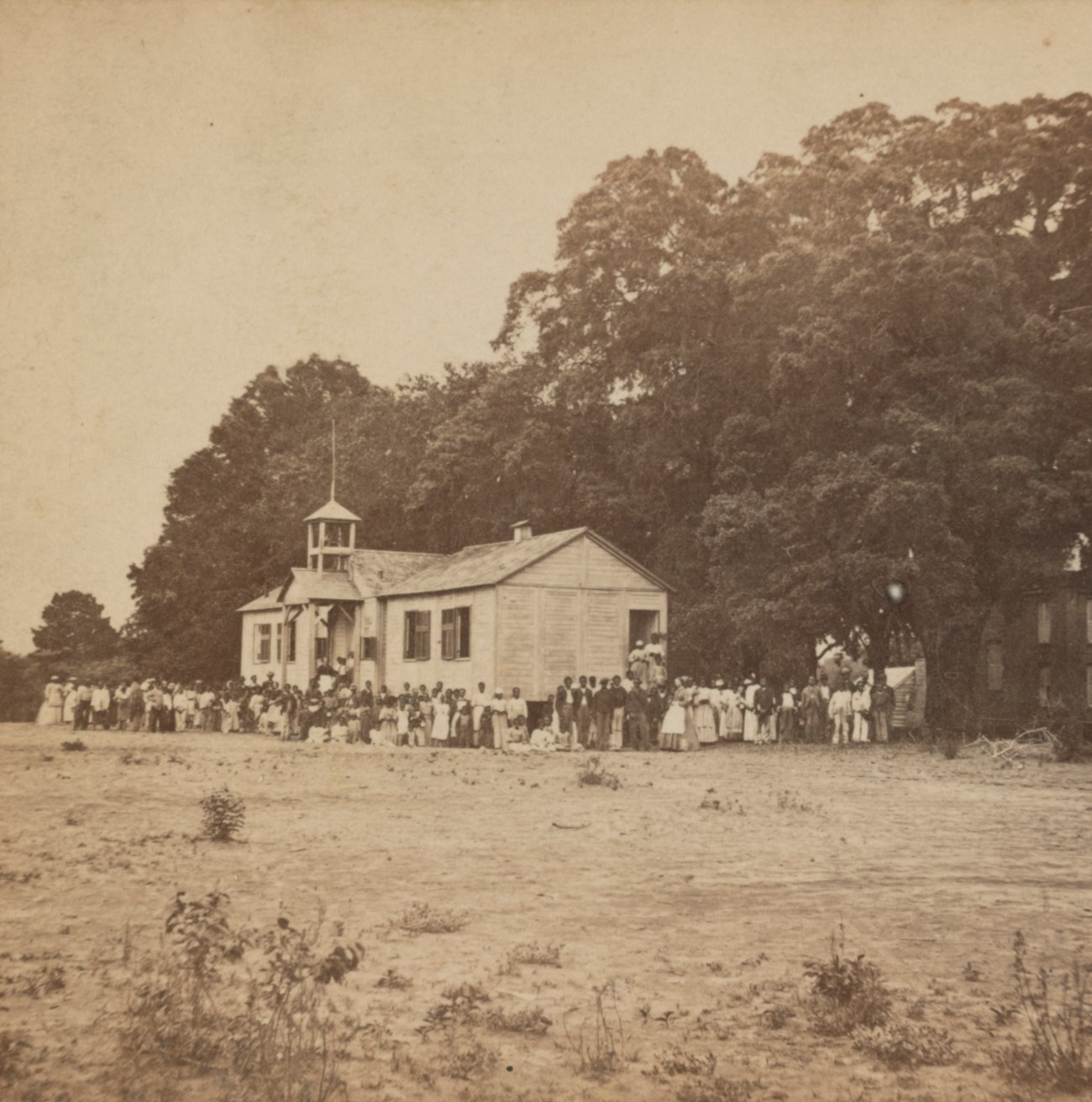Part of a series of articles titled The Port Royal Experiment.
Article
Education During the Port Royal Experiment

LOC
Military officials quickly identified schools as a need on the Sea Islands. In January of 1861, after just a few weeks in Beaufort, General Thomas W. Sherman requested that northern organizations begin to send educators to Beaufort to establish schools for the formerly enslaved people. Northern abolitionist organizations, societies, churches, and individuals had long dreamed of an opportunity to go into the plantations of the Deep South to teach. In mid-March 1862, the first of these reformers and teachers arrived in Beaufort. Known as “Gideonites” these were some of the most ardent abolitionists of the northeastern states, and upon their arrival they quickly made establishing schools a top priority. Many set up on the plantations, where students young and old would attend classes in between their work duties. In downtown Beaufort, four more formal schools were established: two at the present-day Tabernacle Baptist Church, one at First African Baptist Church, and one at Wesley United Methodist Church. Reverend Mansfield French served as the overall Superintendent of schools for the Port Royal Experiment.
In April of 1862, Laura Towne arrived and set up at the Oaks Plantation on St. Helena Island. The next month she was joined by her long-time friend and partner, Ellen Murray, and in June they established the Penn School at the Oaks Plantation. That fall, they moved the school to Brick Baptist Church and were joined by Charlotte Forten. Penn School was backed by the Port Royal Relief Committee of Philadelphia. Penn School became the most famous of the schools established on the Sea Islands during the Port Royal Experiment, thanks in part to the publication of Forten’s accounts in the Atlantic Magazine during the war, and the school’s longevity. Penn School operated as a school well into the 1900s, with the last graduating class in 1952.
Many of the schools were supported by abolitionist aid societies and religious organizations, with the American Missionary Association being the most notable. The AMA had existed for years as an abolitionist organization, but during the Port Royal Experiment it began to establish schools and quickly moved to make that their primary objective. During the Civil War, the AMA often established schools in a region soon after it came under Union control. And their work continued well after the war ended. The AMA operated schools across the Reconstruction era south. For example, in Beaufort, the AMA sent Rachel Crane Mather to establish a school in 1867. However, Mather disagreed with the direction of the program, and instead established her own school, the Mather School. To support educators in the region, and the AMA owned a boarding house for teachers on Carteret Street.
Education is important for understanding the goals of the Port Royal Experiment, both for the missionaries who established them and for the formerly enslaved people enrolling as students. Since the early 1700s, South Carolina law had strictly forbidden literacy among the enslaved people, who made up around 80% of the population on the Sea Islands by the Civil War. Between the establishment of the first schools in the spring of 1862 through the fall of 1864, the outcome of the Civil War remained in doubt. For two and a half years, both students and teachers knew that each day could be their last in the classrooms of the Sea Islands. It was entirely possible that the Confederacy could win the Civil War and re-establish plantation-based slavery in the area. And up until late 1864, it was also a possibility that the Union could have been preserved with slavery intact to some degree. Students were highly motivated to “catch the learning,” as the local Gullah community phrased it, before the opportunity went away.
In March 1865, Congress authorized the establishment of the Bureau of Refugees, Freedmen, and Abandoned Lands. The Freedman’s Bureau, as it was more widely known, conducted a wide variety of activities across the south. One of the agency’s major responsibilities was similar to that of the modern-day Department of Education, providing guidance and support to local educational organizations and institutions. Across the Sea Islands, schools like Penn School, Mather School, and Elizabeth Botume’s school at the site of Camp Saxton, were all supported by a wide range of missionary organizations. Their detailed reports to the Freedman’s Bureau allow modern historians and the public to gain an in depth understanding of the experiences of students and educators across the region during the Port Royal Experiment and Reconstruction.
Tags
- reconstruction era national historical park
- reconstruction
- reconstruction era
- reconstruction era national historic network
- south carolina
- beaufort
- beaufort national historic landmark district
- penn center national historic landmark district
- missionary
- abolitionists
- port royal experiment
- education
- mather school
- school
Last updated: March 12, 2025
